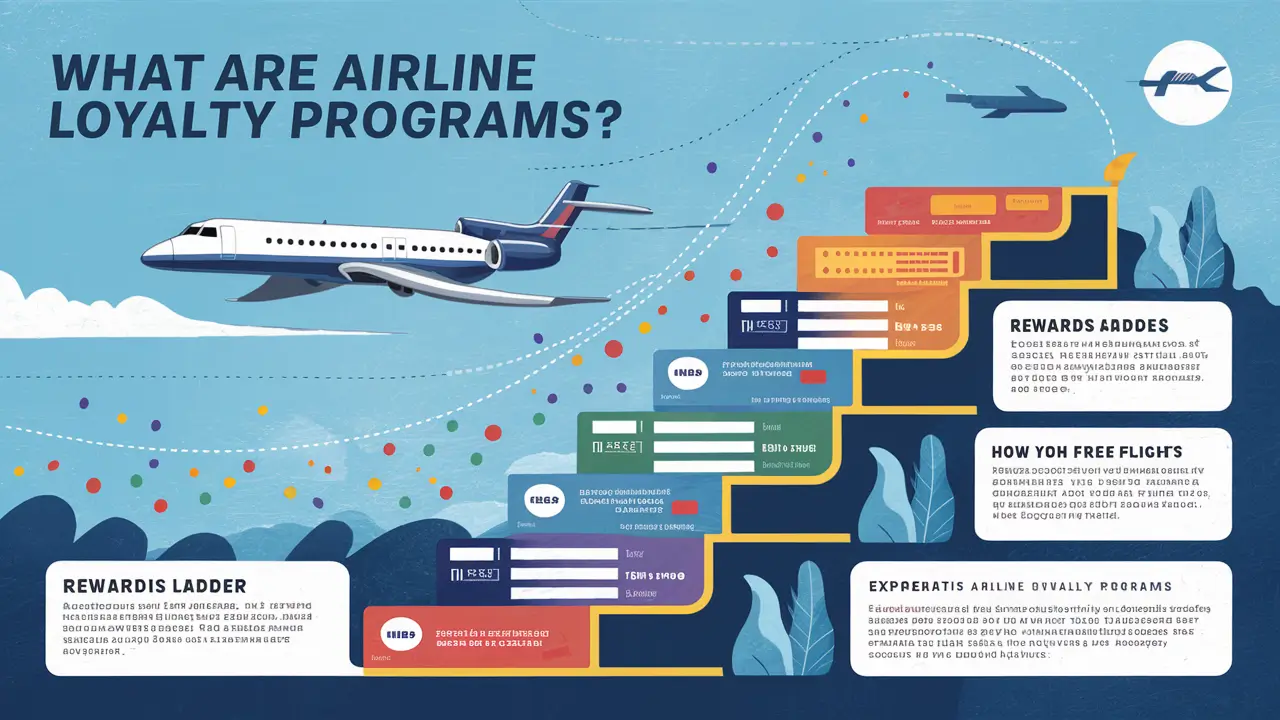What are airline loyalty programs?

A few questions that will be answered in this piece include:
Frequent flyer programs are common promotional strategies most commercial international airlines use to encourage customer loyalty. These programs enable passengers to accumulate points, miles, or travel credits depending on their travel frequency on the airline or on the amount of air and other travel-related transactions they undertake that are affiliated with the airline. These points can be exchanged for free flights, seat upgrades, or other travel-related incentives.
A brief outline of the concept of the airline loyalty program
American Airlines pioneered airline loyalty programs in 1981 by introducing a program called AAdvantage. This enabled people who flew on American Airlines flights to earn mileage credits depending on the distance in miles flown. They could later be redeemed to pay for free flights and upgrades. Realizing the effectiveness of the strategy that American Airlines applied, other airline companies also started organizing their programs to develop customer loyalty.
By the early nineties, all the major airlines in the USA had their programs in place, starting with United's Mileage Plus, which began in 1983, followed by Delta's Sky Miles, which started in 1981, and Northwest's World Perks, which also began in 1983. Loyalty programs evolved in the international arena and airline companies also developed new types of member privileges and cooperation. Today, such programs have tens of millions of members worldwide, and their popularity is growing rapidly.
A brief history of airline loyalty programs and how they operate.
majority of airline reward programs do not have any joining fees and award points or miles each time the member travels with the airline or in cooperation with the airlines. It is computed as ticket price, distance flown, booking class of travel, and member's elite level. Subscribers can then use the amassed points for other loyalty programs like free flights or upgrades to first or business class, as well as extra space. Other ancillary rewards that are also provided by some carriers are merchandise or gift cards that can be redeemed locally.
Furthermore, to become an elite status level, clients can travel frequently and earn status levels based on the total miles or number of segments flown in one calendar year. Higher status levels, for example, give extra privileges such as priority services, airport lounge facilities, fast-track security, and many others. Different status levels for an airline are sometimes referred to by such terms as Silver, Gold, Platinum, and Diamond, which are associated with precious metals and gems.
Network Partners and Alliances
Miles or points can be earned when traveling on a partner airline or staying at a partner chain and can be used to redeem awards on either airline chains or hotel chains. This significantly increases the possibilities of earning awards for flights, not only with specific carriers. For instance, if you are an AAdvantage member from American Airlines, you can earn points on your AAdvantage account when you are flying on any one-world partner airline, such as British Airways, Qantas, or JAL. Some of the well-known international coalitions that interconnect loyalty programs in different carriers include Star Alliance, SkyTeam, and OneWorld.
They also link with retail outlets, credit card companies, hotels, rental car companies, and other service providers to provide customers with other opportunities to accumulate points and miles. Gaining currency through spending as well as travel is also possible, and with it comes more possibilities for redemptions.
Advantages and Disadvantages When Traveling
The main benefits airline loyalty programs offer travelers include:
Awards that allow passengers to get free flights and to be promoted to a higher class of travel
Availing oneself to premium services such as airport lounges and preferential security clearances
Earning or maintaining frequent flyer miles that do not have to be used within a set timeframe or be forfeited.
Receiving meals, car rentals, and hotel accommodations through the travel partners for the associated airline alliances.
The program focuses on leveraging the miles earned through credit cards or other loyalty partners.
Some potential drawbacks to consider include:
Limitations while cashing in an award travel like expiry dates.
Higher redemption requirements in terms of the number of miles required to redeem for the higher-tier awards.
This is because it has to recover its costs from full yields on fares and reduced mileage earnings from deeply discounted economy fares.
Programs can result in the dilution of mileage balances through their changes
It is almost impossible for the casual traveler to attain elite status on their chosen airline.
Surcharge fees are still applicable in some awards tickets
In conclusion, airline loyalty programs enable frequent flyers to be rewarded through valued benefits that contribute to the satisfaction of flying experiences. Airlines™ frequent flyer programs allow those who know how to navigate them to be rewarded free flights, travel benefits, and very cheap award travel rates. People who frequently commute on one or more favorite airlines stand to gain the most from participating in airline loyalty programs.
